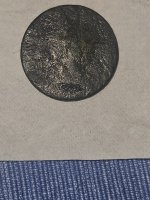Moe (fl)
Hero Member
- Jul 25, 2007
- 731
- 97
- Detector(s) used
- Minelab, Whites, Tesoro, Garrett
- Primary Interest:
- All Treasure Hunting
I was wondering if the Spanish used only gold, silver, and copper in their coins (cobs)?
Does anyone know if they used iron in coins or any other metals such as brass/bronze/low silver/nickel/etc?
Thanks,
HH.
Moe
Does anyone know if they used iron in coins or any other metals such as brass/bronze/low silver/nickel/etc?
Thanks,
HH.
Moe



